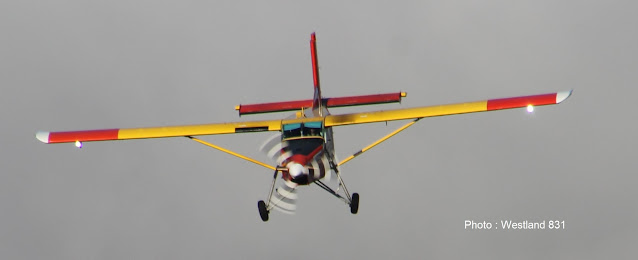Air New Zealand and BETA Technologies team up for first electric aircraft take-off in Tauranga today (17 October 2025). The first electric aircraft to carry the Air New Zealand name has hit the skies today, with the BETA ALIA CX300 taking off from Tauranga Airport in its first test flight in New Zealand. The aircraft was manufactured in the United States by global aviation innovator BETA Technologies. It arrived in the country last week and was blessed at a sunrise ceremony in Tauranga. The aircraft is expected to fly to Hamilton Airport later today where it will be based before moving to Wellington Airport for a further two months in December. Baden Smith, Air New Zealand's General Manager - Fleet, Networks and Strategy, says the first flight marks an important milestone in the airline's Next Generation Aircraft programme, and the innovation journey the airline is on to understand how different technology might work in New Zealand and globally in the future. "New Zealand has a proud history of aviation innovation and pushing for progress, whether it's Richard Pearse who first opened the skies with flying machines, to the era of TEAL flying boats, through to engineers and aviators who connected us to the world. "It's incredibly special to partner with a global innovator like BETA to ensure New Zealand is a part of shaping what the future of flight might look like both here and around the world. We know aviation will keep changing - it always has. This is a small, cautious step to learn and be part of that change," says Baden Smith. BETA Technologies Director of Flight Operations, Chris Caputo, says, "This first flight marks the powerful intersection of pragmatic design and operational innovation. "We built the ALIA CX300 on a foundation of simplicity to ensure a fast, safe, and efficient path to commercial service. With this 'Tech Demonstrator' collaboration, Air New Zealand is not just validating a single aircraft - they are creating the rigorous operational blueprint that will serve as a model for operators around the world who are serious about unlocking low-cost, sustainable connectivity for their regional communities." The ALIA CX300 has been leased by Air New Zealand for four months for a technical demonstrator programme, which enables the airline, alongside partners and regulators, to learn how the aircraft will perform in New Zealand conditions, and to start pilot and engineering familiarisation. It's also an opportunity for New Zealanders to see battery-electric aviation technology up close. During the aircraft's time in Hamilton, Air New Zealand and BETA teams will undertake a programme of flights in a range of conditions and altitudes. In December it will move to Wellington, where it will complete flights between Wellington and Blenheim.
Key facts and figures about the ALIA CX300:
The ALIA is a versatile aircraft built for real-world flight. Its conventional take-off and landing (CTOL) configuration make it a good fit for existing airport infrastructure, and its battery-electric propulsion is quiet, with zero emissions inflight. Designed for all-weather deployment and reliability, BETA's CTOL aircraft can accommodate two crew members and up to 5.6 cubic metres of cargo (200 cubic feet) on missions of up to approximately 398 kilometres (215 nautical miles). The aircraft has been designed to leverage existing airport infrastructure and fly in accordance with existing procedures to enable rapid adoption. Air New Zealand will be introducing its BETA ALIA CX300 pilots in November after the aircraft arrives in Hamilton.
Notes to editors:
Air New Zealand has invested in the required charging facilities to support the operation through its Climate and Nature Fund. 65kW mobile chargers will be based at Hamilton, Wellington and Blenheim airports.
Source : https://www.airnewzealandnewsroom.com/press-release-2025-air-new-zealand-and-beta-technologies-team-up-for-electric-aircraft-takeoff-in-tauranga-today, 17 October 2025

.jpg)
.jpg)
.jpg)





.jpg)
.jpg)

.jpg)


.jpg)
.jpg)
.jpg)
.jpg)
.jpg)
.jpg)
.JPG)
.JPG)
.JPG)
.JPG)
.JPG)
.JPG)
.JPG)
.JPG)
.JPG)
.png)
.jpg)
.jpg)
.JPG)
.JPG)
.JPG)
.JPG)
.JPG)
.JPG)
.JPG)
.JPG)









.jpg)




